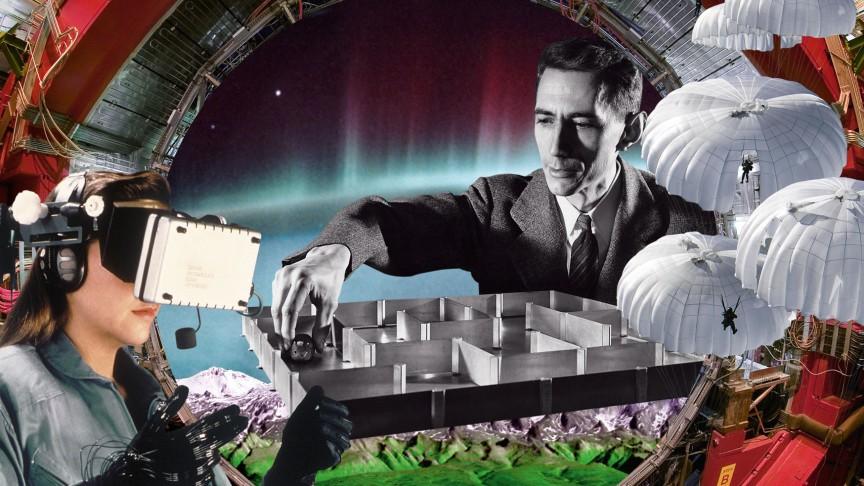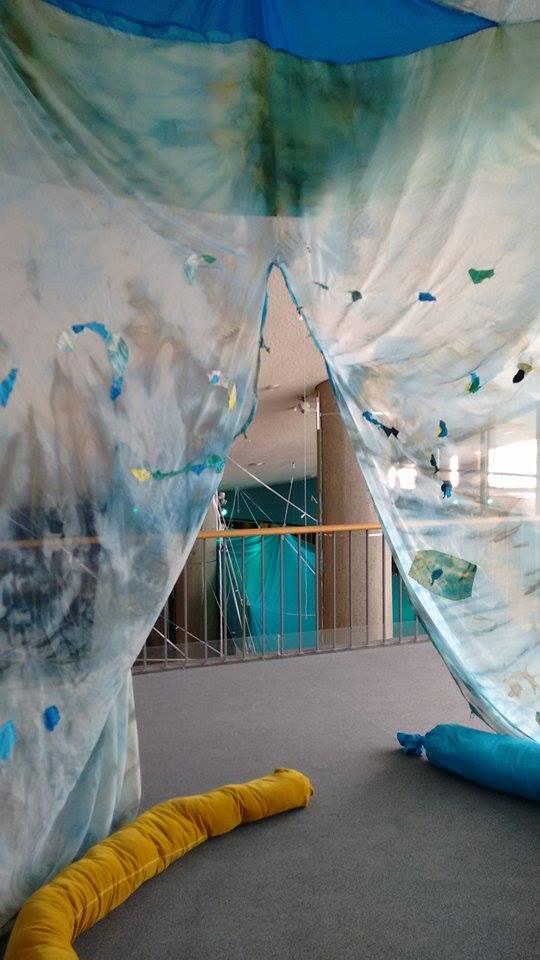Bernd Scherer & Reto Pulfer on 100 Years of Now
Bernd Scherer & Reto Pulfer on 100 Years of Now

At a time when our lives are constantly subjected to acceleration and to a massive use of technologies the exhibition 100 Years of Now takes the time to put things into perspective and make a diagnosis of our society. We had the opportunity – and great pleasure – to meet Bernd Scherer and Reto Pulfer before the grand Opening of the program on Wednesday, September 30 at 18.30h.
We first discussed with Bernd Scherer, the director of the Haus der Kulturen der Welt and artistic director of the exhibition 100 Years of Now (among others), who explained us the ambitious program of this 4-year-long project, as well as its scope and intentions.

Could you tell us more about the whole project of 100 Years of Now?
We thought of this project as a way to address contemporary issues and problems that, we think, are important in order to understand the world we live in. 100 Years of Now will address three major issues we are facing today. First, a great number of our current systems of order are collapsing, such as the nation-state in the Middle-East. A second problem is that technological infrastructures have become so important that they represent a real danger for humanity if they collapse, with Fukushima as an example. Thirdly, in the Western European situation, we are living in a rich society material-wise, but at the same time, this society seems to be neurotic, insecure of itself.
We are living in a time of profound transformations in our society, and the old systems are not working anymore in this context. With 100 Years of Now, we want to understand the structures and logics of the developments which led us to the current situation, to analyze and to confront them with major counter-trends of the 20th century.
Why did you choose to focus on this 100-year time-frame?
This time-frame of 100 years was chosen for two major reasons. The first reason is that looking 100 years back allows to draw up a consistent report. Another reason is that, with the 100 year anniversary of World War I last year, we felt that it was also the first time that this commemoration resonated with the issues that our contemporary society is facing.
Can you tell us more about the core piece of the opening, the Dialogues on Three Parallel Channels?
The basic topics we will introduce during the opening are time, technology and war. The three dialogues running in parallel in the auditorium are all based on a document which is the starting point of the dialogue, and the audience will be able to tune in and choose which theme to concentrate on.
Speaking from the Laboratory shows that technologies which essentially are artificial constructions have a direct effect on our contemporary world. Speaking from prison offers a perspective of the contemporary world while being remote, while the prison cell also represents the attempt to silence dissent and resistance against the systems in place. Dreaming Collectives, a phrase coined Walther Benjamin, describes the consumer society, so obsessed with the phantasmagoria of commodities that it becomes deactivated as political agent.
How will this 4-year-program unfold after the opening? How will it integrate into HKW’s space and activities?
We will work on approximately 12 projects spanning on these four years, each addressing a specific concrete issue, but all interconnected and tackled with a similar attitude. The whole program aims to understand our situation in a broader context.
The first big project is the issue of housing (die Wohnungsfrage). Today, the social structures of cities are changing, people cannot afford to live where they used to anymore. To some extent, this issue is symptomatic of a lot of other problems we are facing today due to the current tendency of the economization of every aspect of our society. The second issue we will work on is Big Data. During the whole project, we will host lectures and archive all the material on the internet so that people can consult it freely and see how the project builds up and unfolds.
Today, we live in a highly-fragmented society where a lot of knowledge is produced in different contexts, and it can be hard to “speak the same language”. Haus der Kulturen der Welt aims to create an interface to allow people to interact with each other in this context.
We then met Reto Pulfer to speak about his contribution for 100 Years of Now, that includes an installation in HKW’s foyer as well as several performances that will take place in the tent city he created for the five-day opening.

Can you tell us about Dehydrated Landscape of a Condition, the installation you made for 100 years of Now?
The installation is a retrospective that presents works I made from 2007 to 2015. Most of the tent were designed for specific projects in London, Berlin or Nuremberg among others. The tents fit the exhibition spaces, but for 100 Years of Now, they are gather and form a sort of small city. They all have different qualities, as each of them is a selected, singular state of mind, emotion or concept that one can experience by going through these different environments.
How does your installation interact with the performances of the other artists?
The performances will all take on different forms. We will perform with the objects surrounding us, and the other artists are free to use and interact with the tents and the whole space. I do one of the performances on my own. For another performance I do with Mia Von Matt, Eisklares Echo and Thirsty Moon, we will use one of the tents and play music for two hours, have tea, install a small fountain with light. Doom Spa V - Good Luck To Us All will project movies on one of the tents while a sounds piece running.
How does your installation Dehydrated Landscape of a Condition relate to the issues addressed in 100 Years of Now?
I was really happy to be invited to contribute to this exhibition because I am interested in the issue about World War I, its factors and effects, as well as the changes it brought. War also led to a lot of art movements, like Dadaism or Surrealism, it opened the way for the avant-garde and art became much more detached from reality. The tents I create are ephemeral works that also represent atonal structures, symbolic or ancient spaces that are timeless.

So are there any new pieces integrated in the installation?
Yes, one piece will stay at HKW during the whole 100 Years of Now project. The tent is located on the first floor, with a big carpet, pillows and books dealing with the issues of the exhibition that were selected by the HKW’s resource department. People can come, sit down and read. The rest of the installation, in the foyer, will remain only for the five day opening.
What is your relationship with music in your research? How do you use it? Your performances can sometimes remind us of rituals
It is true somehow, but for me, performances are a matter of using the spaces, the rooms, the audience, the attention. Silent objects can be performed and come to life, even if I do not use them, the audience can interact on an emotional level with the objects. These objects are living the spaces and the spaces affect them. During my performances, I play the guitar, I improvise a lot, and the sounds can vary from loud and brutal to soft and ambient. The improvisation part allows me to have a direct interaction with the audience and to create direct emotions.
As you have often written, you appeal to a lot of “mental images” and “mnemonics”. What is the role of Imagination in your works and on reality according to you?
I think Imagination is just another way to perceive reality, and it also helps us to make use of it. Imagination is very free, not bound to physical nor economic constraints. For me, imagination is like a sketchbook that I use in the process but it is not shown. My mental images do not need to be translated because they are always changing, and because people create their own memories when they enter the spaces. They help me to make a performance, but then they don’t have to correspond exactly to that performance. They are a starting point to my performances.
What about your perception of time? It is more magical than linear?
With mental images, I recreate a time-frame and spaces that do not exist, or a whole society that does not exist. In that sense, my performance are not anchored in time. I also write stories and this process is very different, because time here is more linear.
What is the relationship between your use of subjective images as a starting point to create and the cybernetic times we are living in dominated by open source and billions of shared images?
I am often more interested in personal images, there is no copyrights on them, for me that is interesting to find something unique, that only belongs to me. But at the same time, anyone can create those images, so I guess it could be compared with open source, as everybody can have it.
100 Years of Now. The Opening. is running until October 4, 2015 at Haus der Kulturen der Welt. You can find the whole program here.
